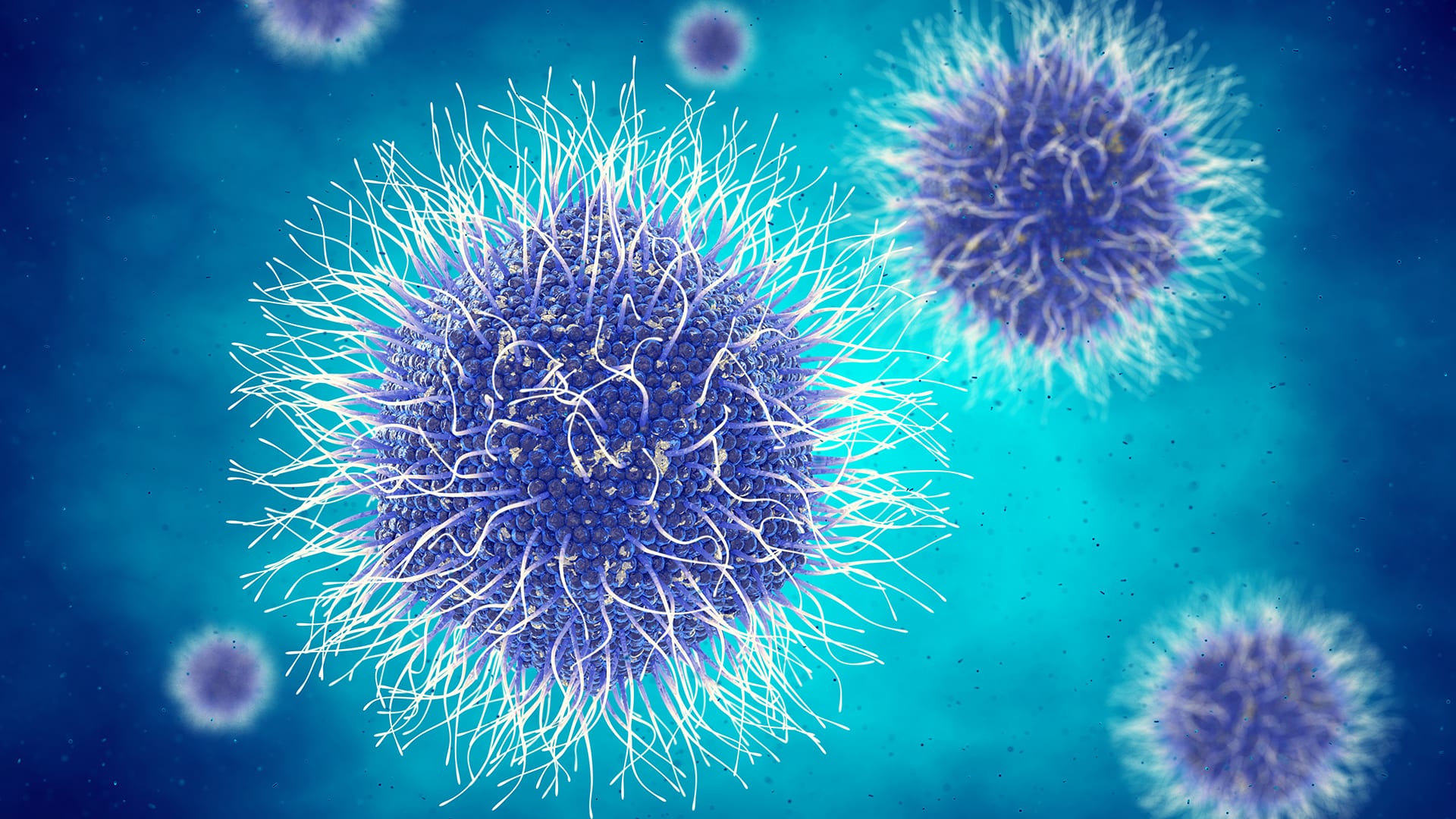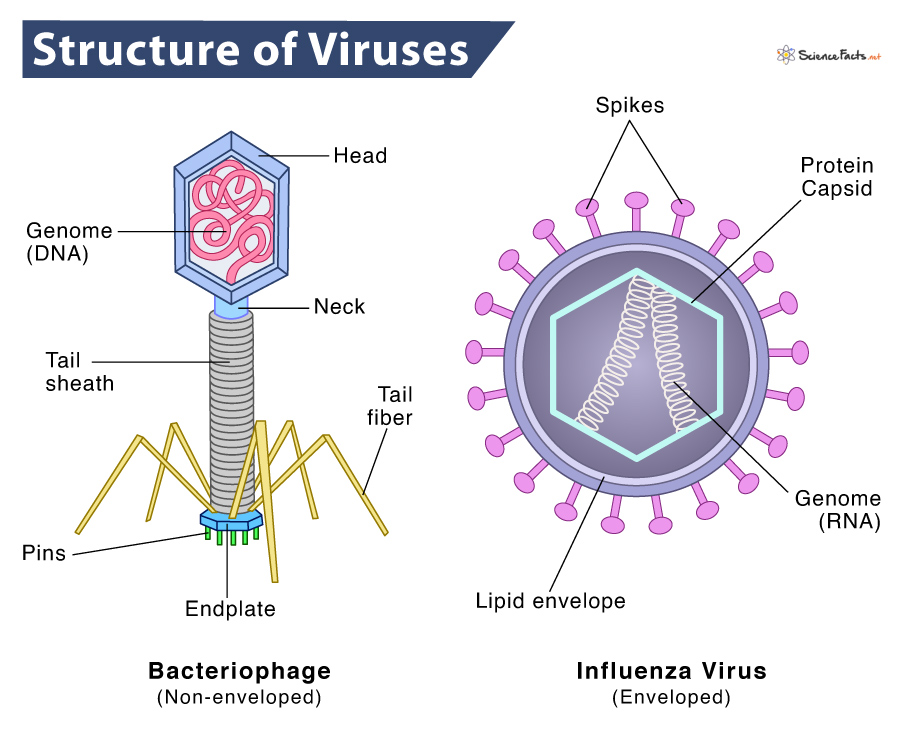Virus: Parts and Structure with Characteristics and Diagram
What are Viruses
Viruses are tiny, infectious agents that live and multiply only inside a living cell. Viruses can infect all types of life forms, from animals and plants to microorganisms, including bacteria and archaea. A complete virus particle with all its parts that can infect a host organism is called a virion.
Viruses were first discovered in 1898 by Dutch scientist Martinus Beijerinck.
Basic Characteristics of Viruses
Are They Alive
Although Viruses display both living and non-living features, they are not considered alive because they lack most of the properties of a living organism. They are non-cellular in origin (not made up of living cells), cannot grow and replicate independently without a host organism, and also lack their own machinery for metabolism.
Other Characteristic Features
- Does not increase in shape and size
- Containsnucleic acid, DNA or RNA as their genetic material
- Its genetic material is surrounded by a protein envelope called a capsid
- Reproduces at a much faster rate than bacteria
- Passes through membrane filters
Structure
How Big are Viruses
Viruses are tiny particles much smaller in size than bacteria. They display a wide variety of shapes, where some look like a popcorn, while others may have more complicated shapes of a spider or even the Apollo Lunar Lander. They range in diameter from 20 to 300 nanometres and can be viewed only under a microscope.
Parts and their Functions
A typical virus consists of two basic parts: 1) nucleic acid genome and 2) protein capsid – together called the nucleocapsid. Besides these, many animal viruses also contain 3) lipid envelope along with some additional parts such as the neck, tail sheath, tail fibers, pins, and endplate to form a complete virion.
Nucleic Acid Genome
The genetic material of most viruses is double-stranded DNA (Deoxyribonucleic acid), with some exceptions where the genetic material is either single-stranded DNA or RNA (Ribonucleic acid).
Functions
- Providing genetic information to make it possible to synthesize all viral proteins
- Helping in the synthesis of new viruses within the host organism
Protein Capsid
It is the protein shell that encloses the viral genome. Capsids are made up of individual subunits called capsomeres, which form the basic structure of a virus. Based on structure, capsid can be of following types:
a) Icosahedral: Capsid with a hollow, quasi-spherical structure. Twenty equilateral triangles arranged around the surface of a sphere forms an icosahedron. A particular type of icosahedral shape called prolate has an elongated symmetry found in bacteriophages, as shown in the diagram.
b) Filamentous: Capsid with a linear, thin, thread-like appearance. They may also be called rod-shaped or helical.
c) Complex:Capsid having a combination of icosahedral and helical shape and may have a complex outer wall or head-tail morphology.
Functions
- Enabling the virion to penetrate the host cell membrane
- Protecting the nucleic acid from digestion by host enzymes
- Containing unique sites on its surface that allow the virion to attach to a host cell
Lipid Envelope
In some viruses found in animals, the nucleocapsid is surrounded by a membrane, also called an envelope. The envelope is composed of lipid-bilayer with proteins attached to them. Many viruses also develop special structures called spikes made of glycoprotein on their envelopes.
Functions
- Helping the entry of viruses into the host organism
- Helping the virion to attach to specific host-cell surfaces using spikes
- Protecting the genetic material of virus from destruction by host enzymes
- Escaping identification by the host immune system
How do Viruses Reproduce (or Replicate)
It works using a set of steps in which a virus recognizes and enters the host cell to modify and synthesize more virus particles. A typical virus lifecycle include following main steps:
- Attachment: The virus recognizes and binds to a host cell with the help of receptor molecules
- Entry: The entire virus or its genetic material enters the host cell cytoplasm and then into the nucleus
- Replication: The viral genome is copied, and its genes are expressed to make viral proteins
- Assembly: New viruses are formed from the copies of the genome and proteins inside the host
- Release: Complete viral particles leave the cell and infect other host cells.
FAQs
Ans. Viruses do not have a nucleus, nor do they have most of the other cell organelles that are present in higher organisms.
Ans. Viruses do not have any cell organelles, including a cell wall.
Ans. Viruses do not have mitochondria and ribosomes like all other cell organelles.
Ans. Viruses are much smaller in size than bacteria and can only reproduce within specific host organisms using their cellular machinery. In contrast, bacteria are microorganisms much larger than viruses that can live both independently as well as inside a living cell.
Ans. Viruses are neither considered prokaryotes nor eukaryotes because, unlike them, they are non-cellular in origin. Also, they cannot reproduce by themselves, similar to a cell.
Ans. Viruses are thought to have originated from previous free-living organisms that adapted a parasitic replication strategy.They have evolved from the mobile genetic elements that gained the ability to move between cells.
Ans. Antibiotics work by targeting some parts of the disease-causing organism, such as cell walls and proteins, which a virus does not possess of its own.
Ans. Since viruses are too small to be seen with our naked eye, they are considered as microorganisms.
Ans. Some common viruses that can cause diseases in humans include the smallpox, common cold, measles, mumps, chickenpox, hepatitis, polio, rabies, HIV, rubella, and ebola viruses.
-
References
Article was last reviewed on Thursday, February 2, 2023





